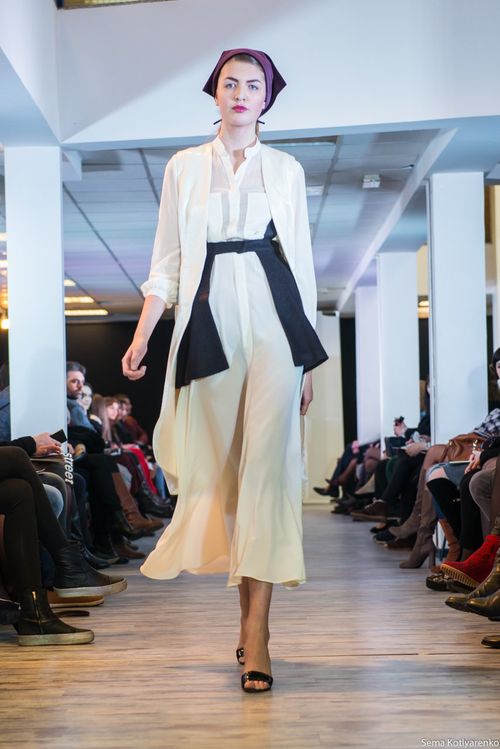Summarizing Odessa Fashion Day
Or Why clothes by domestic designers are still rare in Ukrainians’ wardrobes
The unwelcome snow at the end of past week failed to dampen the 11th Odessa Fashion Day. The three-day-long program included 27 shows, among which two presentations by French designers, seven debut collections by graduates of the Ukrainian Fashion Academy, and four children’s projects in the section Kids Fashion.
The fashion days in Odesa were opened with the show by 2Friends Studio. Models on the catwalk sported white embroidery on white, shawls, milled wool, and gauze, all to the music of DakhaBrakha. A duo of Tetiana Holubieva (Luhansk) and Anastasia Shkura (Chernivtsi), who were among the 20 representatives of Ukraine on this year’s New York Fashion Week, presented their joint collection, “Most Favorite,” an imitation of several regions’ traditional costumes.
“We have studied museum exhibits dating back to the 17th-18th centuries, traveled all over Bukovyna, and talked to the old ladies who still keep ancient embroidery at home. Ethnic elements and multiple layers, as a distinctive feature of the national costume, are the leitmotif of our entire collection. That is why we only used two colors, wine red, traditional for Bukovynian outfits, and white, as the symbol of friendship and peace, which is particularly topical in the light of the recent events,” said Holubieva.
The audience also saw the collections by KEKA, Irina Tydnyuk, Tanita & Viktory, Natali Gulesha, Isabel Garcia, and others. Due to the cooperation with French Spring, international participants have come to Odesa for five years now. This time the guests, Mimmo Carabetta and Maya Ginsen, arrived from Marseille.
Notably, Natalia Dudka, the designer of the brand bearing the same name, for some time was an assistant to Viktoria Hres. Apprenticeship with more experienced colleagues is a routine practice in the global fashion industry: this is how the world got to know about Karl Lagerfeld, who assisted Pierre Balmain, or Phoebe Philo, a former assistant of Stella McCartney’s.
The 11th OFD was special in that the podium was given to young designers, who defended their first collections upon graduation from the Ukrainian Fashion Academy. “Buy Ukrainian, this is the way to overcome economic and cultural problems!” was the unwritten motto of all the shows. According to OFD organizer Kostiantyn Leontiev, the surge of currency exchange rates, which caused prices for imported clothes to soar, gave a new chance to domestic fashion designers and producers: “Designers from Ukraine handled the changes in a right way. Now, starting from national TV channels and ending with bloggers, you see the leitmotif ‘Made in Ukraine.’ The crisis boosted the development of the domestic market.”
That said, you will not often bump across people wearing domestic brands, despite all the hectic activity in Ukraine’s fashion world. Shopping sometimes is done in the boutiques of world-famous brands, less frequently at concept stores, and mostly at malls, markets, or second hand shops. The vast majority of Ukrainians do not rush to buy clothes by domestic designers, because it is not affordable. And if it is, it may lose in terms of style to well-known fashion houses whose clothes cost as much, and sometimes even cheaper. The absence of state support, proper education, and own closed production cycle take their toll. Fabrics, accessories, and other materials are usually imported, because now cultivating flax or making own fabrics does not pay.
However, in Odessa the budget and medium market sectors are developing quite fast, niche brands and concept stores of exclusively Ukrainian designers are appearing, where you can buy a dress starting at 600 hryvnias, or a coat at 1,600, and the quality is quite decent.
Clearly, our policy-makers have their hands full with other problems today besides fashion. But in the previous 23 years they were not particularly preoccupied with it. It is not only the matter of the country’s attractive image, but also of budget revenues. Suffice it to remember how lucrative the Paris Fashion Week is, where all participants, from designers to models, pay taxes to the municipality.
Meanwhile, we can only dream of financing and development of the light industry, which would create new jobs and new Ukrainian outfits on Ukrainian shelves.
Newspaper output №:
№24, (2015)Section
Time Out





